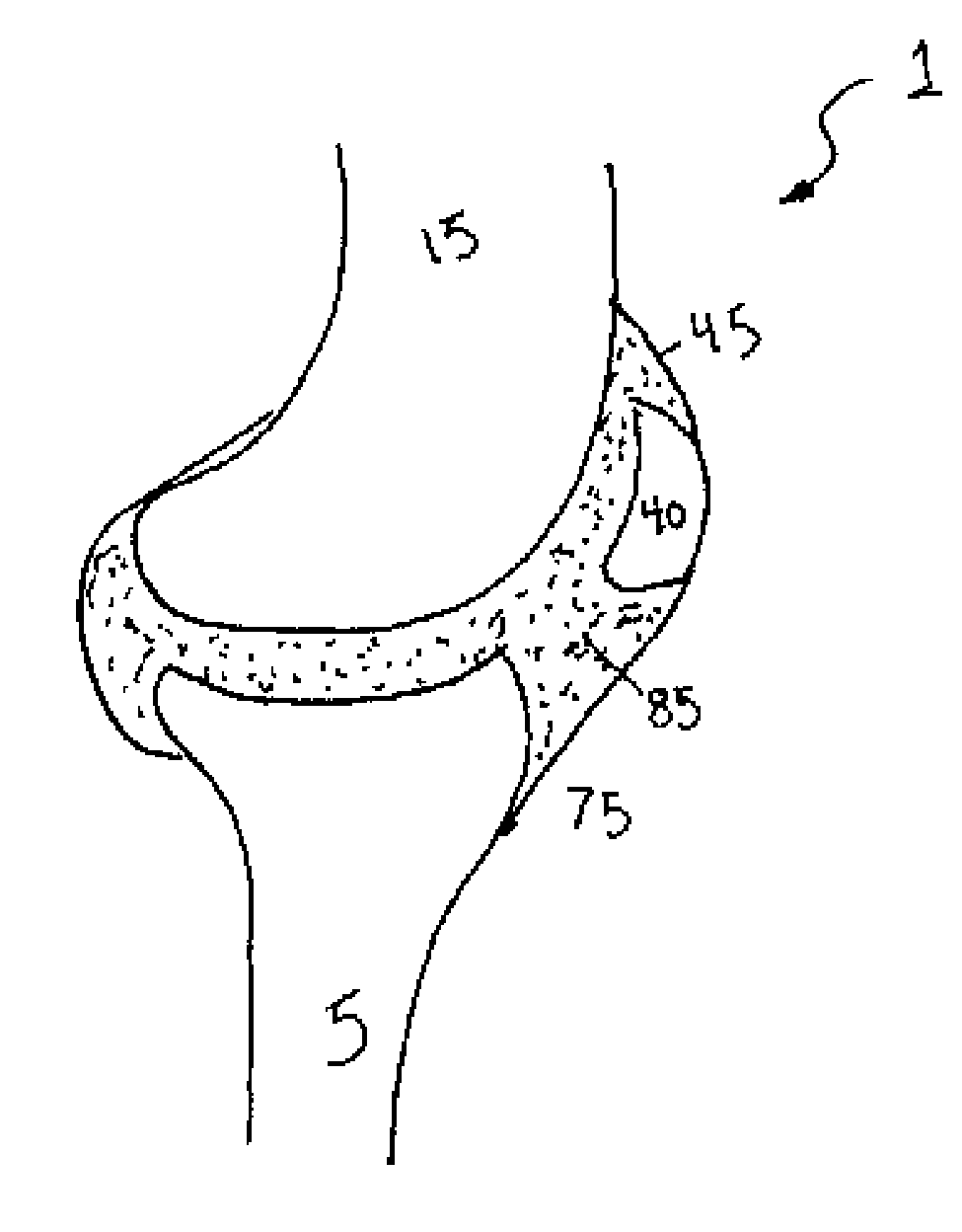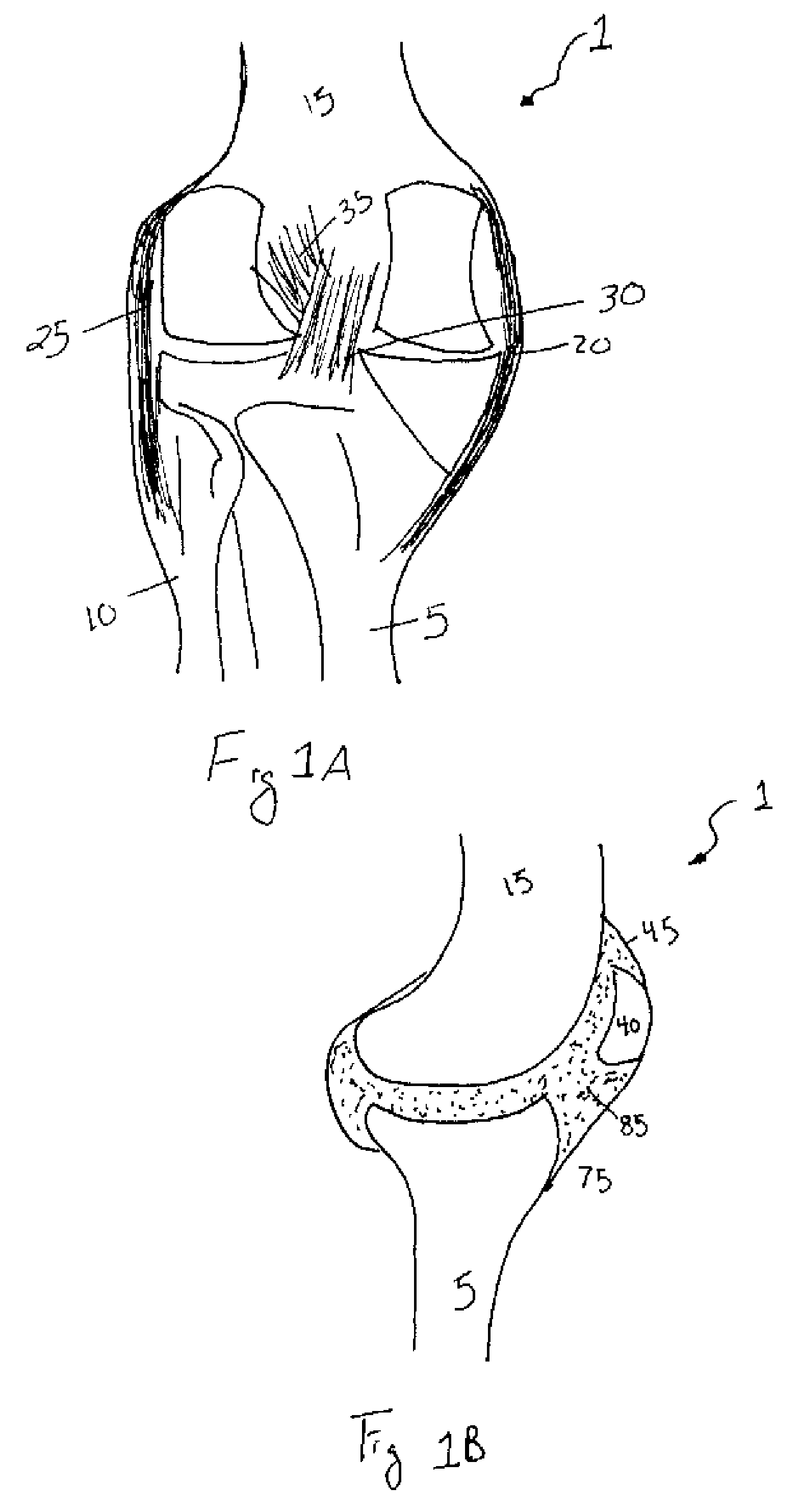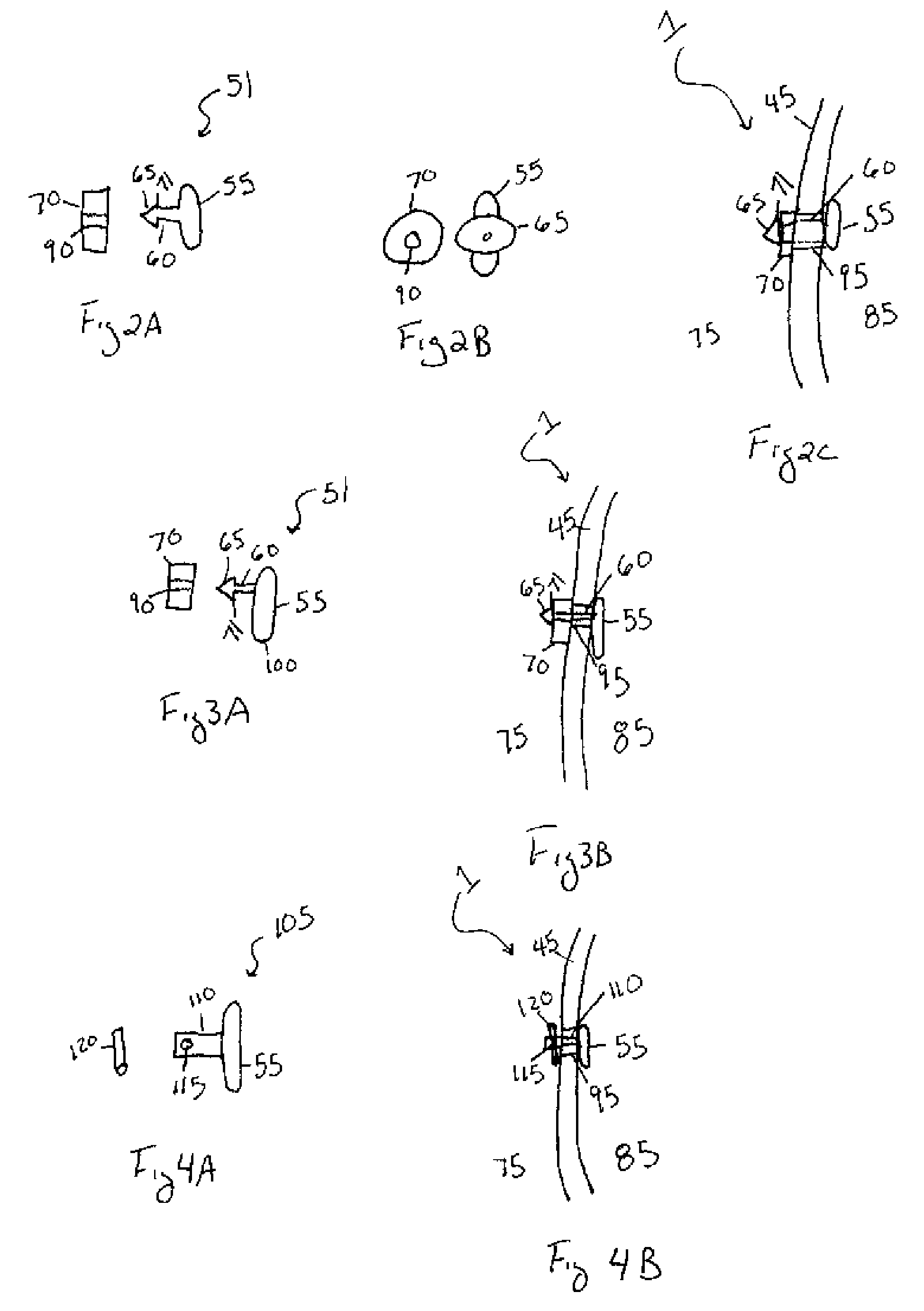Method and apparatus for delivering treatment to a joint
a treatment method and joint technology, applied in the field of apparatus and methods for treating disorders or trauma to joints, can solve the problems of only reducing inflammation, body to elicit an immune response, and deterioration of surrounding tissues, and achieve the effect of increasing patient complian
- Summary
- Abstract
- Description
- Claims
- Application Information
AI Technical Summary
Benefits of technology
Problems solved by technology
Method used
Image
Examples
first embodiment
[0051]The above first embodiment of present invention is not limited to the recited structure of the depot 55, tether 60, and cap 70. More specifically, as illustrated in FIGS. 7A and 7B, the distal end 65 of the tether 60 may be adapted to receive the cap 70. For example, the tether 60 may contain a slot 66 with at least one groove 68 therein wherein the slot 66 functions as a female end of the tether 60. The cap contains at least one ridge 67 extending from one side of the cap wherein the ridges 67 function as a male end of the cap 70. To this end, the slot 66 is adapted to receive the ridge(s) 67 such that the ridge(s) 67 of the cap 70 are press fit or snapped into the slot 66 of the distal end 65 of the tether 60. Alternatively, the ridge 67 and groove 68 may be adapted such that the cap threadingly engages the tether. In either case, the groove(s) 68 of the slot 66 match up with the ridge(s) 67 of the cap such that the cap 70 is frictionally secured within the tether. As illust...
second embodiment
[0093]The second embodiment is advantageous in that the distance between the tether 60 and the opposing end 100 of the depot 55 is greater. Accordingly, the depot 55 may be implanted into the synovial joint 1 with greater ease. Moreover, a small incision 95 in the membrane 45 is all that is required to implant the depot 55 within the synovial joint 1. This, in turn, reduces the risk of any adverse consequences stemming from implantation of the device such as, but not limited to, leakage of the synovial fluid, infection, or any further complications.
[0094]Referring to FIG. 4A and FIG. 4B a third embodiment of the present invention is illustrated. In the third embodiment, the depot 55 may be a rod, as illustrated in FIG. 4A, a disc, a cylinder, or any other shape understood in the art to act as a sustained-release drug device or depot. The depot 55 may take the form of any solid, biodegradable, natural or synthetic polymer or combinations thereof, as discussed above, and may contain a...
third embodiment
[0097]An advantage of this third embodiment is that the depot may be implanted within the synovial joint with greater ease. Accordingly, the structural integrity of the membrane 45 is maintained and there is less risk of infection and / or synovial fluid or biological agent leaking from the synovial joint.
[0098]Referring to FIGS. 5A, 5B, and 5C a fourth embodiment of the present invention is illustrated. In the fourth embodiment, the depot 55 may be a rod, as illustrated in FIG. 5A, a disc, a cylinder, or any other shape understood in the art to act as a sustained-release drug device or depot. The depot 55 may be composed of any solid, biodegradable, natural or synthetic polymer or combinations thereof, as discussed above, and may contain at least one biological agent, as discussed above. The tether 130 of the fourth embodiment may be, but is not limited to, at least one suture extending from the depot 55. The length of the tether 110 may be of any length necessary for implantation in...
PUM
 Login to View More
Login to View More Abstract
Description
Claims
Application Information
 Login to View More
Login to View More - R&D
- Intellectual Property
- Life Sciences
- Materials
- Tech Scout
- Unparalleled Data Quality
- Higher Quality Content
- 60% Fewer Hallucinations
Browse by: Latest US Patents, China's latest patents, Technical Efficacy Thesaurus, Application Domain, Technology Topic, Popular Technical Reports.
© 2025 PatSnap. All rights reserved.Legal|Privacy policy|Modern Slavery Act Transparency Statement|Sitemap|About US| Contact US: help@patsnap.com



